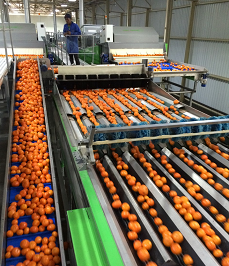 While few traders wish to go on record, many agree: it’s been a memorably bad season for South African citrus in Russia – even “horrific”, in the opinion of an experienced trader.
While few traders wish to go on record, many agree: it’s been a memorably bad season for South African citrus in Russia – even “horrific”, in the opinion of an experienced trader.
Ironically, the season started off well when South African Satsumas met a market short on soft citrus during the hemispheric transition period. Receivers expected supply to continue on the short side and they ordered a very large volume of soft citrus from both South Africa and South America.
Instead there was a full crop from both, and receivers received more than they had bargained for, says a citrus trader at a multinational exporter who wishes to remain anonymous.
“Moreover the quality was poor to mediocre. Warehouses were full, retailers were full. The retailers had so much choice, they started becoming very fussy and rejecting fruit, and on the wholesale market prices went very low.”
Says another trader, experienced in Russia which he describes as the most difficult market in which South Africa sells fruit: “Retail was fantastic up until week 22, week 23 when suddenly all of my retail clients started reporting quality problems.”
Traditionally Russia takes out of spec fruit and class 2 fruit, like fruit with wind marks, which was a huge problem this season.
“This year a large proportion of the crop, perhaps 40 to 50%, didn’t make the Far East class 1 nor was it suited to the size distribution required for European retail,” the trader, who likewise does not want to be named, continues. “Hence the high volumes to Russia.”
Worst clementine season
The disappointing shelf life of usually dependable cultivars puzzles one exporter to whom FreshPlaza speaks. “It’s not only the receivers’ fault for ordering the large volumes that they did, but at the end of the day there was a big problem with quality and shelf life.”
It’s a combination of many factors, and changes to postharvest protocols to stay within the law of ever-tightening MRL prescriptions could have played a role, some in the industry posit. But the impact of climate is also mentioned, especially since certain areas were significantly more affected by quality problems than others.
One trader calls this the worst clementine season he has ever experienced and certainly the toughest Russian campaign yet.
Role of climate
“Over the past 12 years we’ve only had one other such a year, so I’d like to believe it’s something inherent to climate, something subtle. The unpredictability of climate means in all probability we’re back to a year with normal shelf life next year.”
And then of course the delays at the harbours – “a total nightmare” – amplified every weakness so that Novas that would normally be trucked to the outskirts of Russia, didn't have the shelf life for the journey and remained on the open markets of the big cities.
Supermarket DCs buckled under oversupply
In an attempt to maintain schedule integrity, shipping lines loaded a lot of fruit on the first transit ship with the result, a trader says, that three or four weeks' worth of loaded fruit all arrived simultaneously.
“Where one of the largest retailers wanted twenty to thirty containers a week, there now arrived three or four times as many at a time. Therefore the quality problems plus the delays plus arrivals caused some supermarket distribution centres to buckle.”
